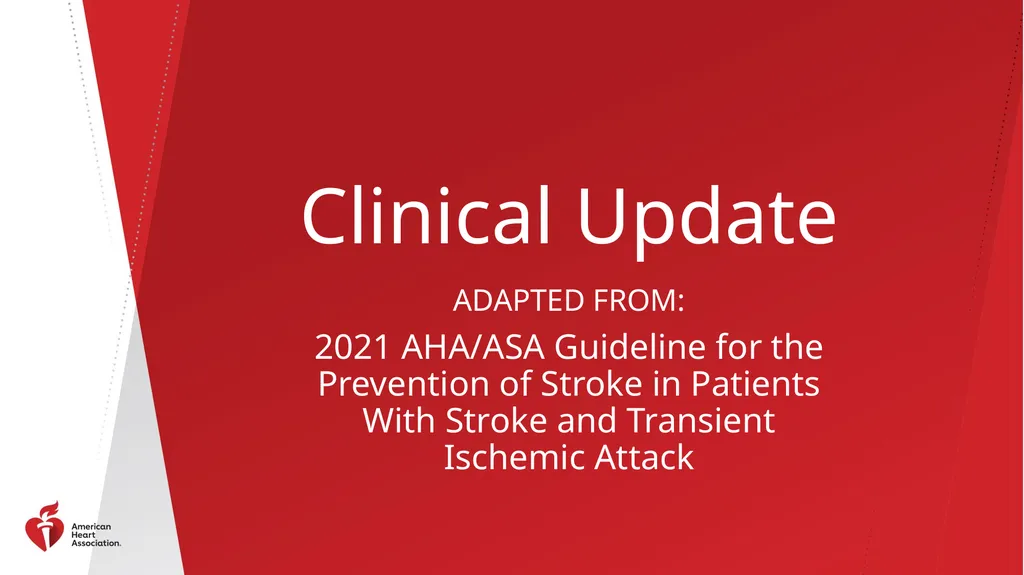
Author : pamella-moone | Published Date : 2025-05-13
Description: Clinical Update ADAPTED FROM: 2021 AHAASA Guideline for the Prevention of Stroke in Patients With Stroke and Transient Ischemic Attack Table 1. Applying Class of Recommendation and Level of Evidence to Clinical Strategies, Interventions,Download Presentation The PPT/PDF document "" is the property of its rightful owner. Permission is granted to download and print the materials on this website for personal, non-commercial use only, and to display it on your personal computer provided you do not modify the materials and that you retain all copyright notices contained in the materials. By downloading content from our website, you accept the terms of this agreement.
Here is the link to download the presentation.
"Clinical Update ADAPTED FROM: 2021 AHA/ASA"The content belongs to its owner. You may download and print it for personal use, without modification, and keep all copyright notices. By downloading, you agree to these terms.













